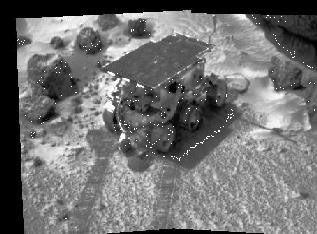This image shows the Rover at work.
Click on image for full size
Image from: JPL/NASA
Soils explored by the Rover
One of the measurement objectives of the Mars Pathfinder mission was the examination of the composition and structure of the soil. As the Rover traversed the surface exploring the rocks of Mars, it also sampled the soil near those rocks. Some soil mechanics experiments were performed by spinning the Rover's wheels (mostly the rear wheels). As the wheels dug into the surface, the Rover discovered that much of the ground is made of dust, possibly deposited during many of the Martian Global Dust Storms.
Scientists have identified four types of soils in the Martian surface near the Pathfinder landing site.
- Dark Soil (dark gray)
- Bright Soil (bright red)
- Disturbed Soil (disturbed by the passage of the Rover & airbags)
- Lamb-like Soil (just found around the rock "the Lamb")
The soils show a variety of mixing and layering features including:
- finely grained, cloddy & rocky soil, found near the rock named Pooh Bear
- a cemented crust which couldn't be moved by the Rover's wheels, found near Pop-Tart & Scooby Doo
Everywhere the Rover passed, it disturbed the soil, and the soil underneath turned out to be a darker red-brown soil than it's surroundings. An example of disturbed soil occured when the Rover crossed the
Mermaid Dune, shown
here.
Results of the soil study include the fact that the soils do not seem to be the weathering products of the eroded rock nearby, thus they are not derived from the rocks nearby. Soils are similar, however, to those found at the Viking landing sites. Scientists are busy trying to figure out how these soils could have been created.
You might also be interested in:
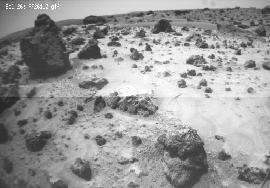
This image shows the rock called Pooh Bear. Soil found near Pooh Bear seemed to be a clumpy kind; finely grained, cloddy, and rocky. This was different from the soils found near the rock Scooby Doo, which
...more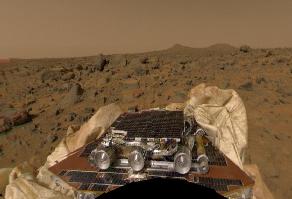
The Mars Pathfinder (MPF) mission was sent to investigate the geology of Mars. Its principal objective was to analyze the rocks and soil of Mars. The MPF consisted of 2 components, a lander and a mobile
...more
The Mars Pathfinder was launched in December 1996 aboard a Delta II rocket. The spacecraft entered the Martian atmosphere on July 4th, 1997 with a Viking-derived heat shield and landed with the help of
...more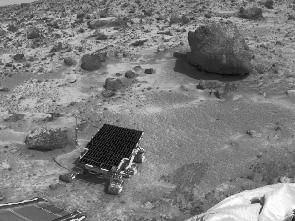
These are the findings of Mars Pathfinder. High Silica Rocks - a result from chemical analysis of the Martian rocks. suggestive of differentiated (evolved) rocks and minerals. helps establish that, like
...more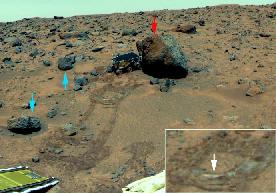
The rocks explored by the Mars Pathfinder's Rover have been classified into three kinds by scientists analysing the Rovers' findings. Potentially the rocks may all be the same kind of rock, all having
...more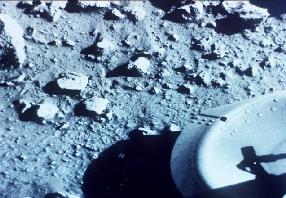
The Viking I and Viking 2 missions were designed to both orbit Mars and land and make exploratory observations on the planet's surface. At this stage in the history of the exploration of Mars, scientists
...more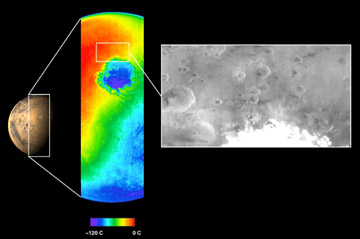
The Mars Odyssey was launched April 7, 2001, from Cape Canaveral Air Force Station in Florida. After a six-month, 285 million-mile journey, the Odyssey arrived at Mars on October 24, 2001 (02:30 Universal
...more


